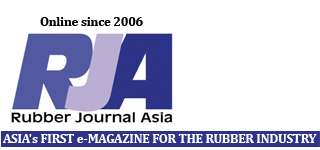 The past two years have seen new players entering the replacement car tyre scene in the four key Southeast Asian markets where GfK, Germany’s largest market research institute, conducts Point of Sales tracking for car tyres in Southeast Asia. Since the beginning of 2015, 22 new brands have jumped onto the bandwagon in the key cities of Thailand, Malaysia, Philippines and Indonesia—.
The past two years have seen new players entering the replacement car tyre scene in the four key Southeast Asian markets where GfK, Germany’s largest market research institute, conducts Point of Sales tracking for car tyres in Southeast Asia. Since the beginning of 2015, 22 new brands have jumped onto the bandwagon in the key cities of Thailand, Malaysia, Philippines and Indonesia—.
Competition has been intensified by the presence of 22 new brands in the key cities of Thailand, Malaysia, Philippines, and Indonesia as weaker players are forced out of the market.This year, Malaysia and Philippines reported the greatest number of replacement car tyre brands at 61 and 59, while players in the Thai market stood at 51. Car owners in Indonesia had the least number of options, with only 24 car tyre brands available to them.
In the first eight months of 2016, the sales volume of replacement car tyres in Thailand and Malaysia exhibited healthy growth by 8% and 3% respectively, when compared to the same period in 2015. Meanwhile, Philippines and Indonesia experienced slight declines in demand by 3% and 2% respectively.
The implementation of first-time car buyer scheme in 2012 and 2015 stimulated car sales in Thailand substantially and resulted in the surge of demand for replacement car tyres in the following years, according to Jasmine Lim, Account Director for New Business at GfK in Asia.
“In Malaysia, the growth in car tyre volume sales is largely attributed to the post-GST (Goods and Services Tax) syndrome, but the substantial dip in prices of replacement car tyres due to aggressive brand promotions had inadvertently brought down the overall value of the market this year.”
After the implementation of GST in April 2015, manufacturers have increased their efforts to attract the consumers back. This led to a substantial 24% decrease in car tyre average selling price from the previous year, according to GfK reports for Central Malaysia. Competitive price adjustments continued into 2016, which caused its average price to decline a further 26% compared to a year ago.
Thailand and the Philippines have also shown similar downtrends in replacement car tyre prices, although to a lesser extent.
“Across the region, manufacturers are progressively offering more affordable price tiers to cater to a wider spectrum of consumers,” noted Lim. “Such a strategy could act like a double-edged sword where they risk diluting their brand equity and value over time while consumers benefit from being able to choose from a widening range of products at various price levels,” she highlighted.
The region has been showing a declining price trend in the replacement car tyre market across the years, GfK findings revealed.
Indonesian car owners have been, and continue to enjoy the most affordable tyres which currently cost an average of US$48—down from US$52 in 2014. In comparison, those in Thailand are paying nearly twice as much at around US$90—although this is already a reduction from the US$98 average price two years ago, and US$94 last year.
Malaysia shows the greatest fluctuation where tyre prices have dropped from US$91 in 2014, to US$72 a year ago and reaching a substantially lower average price of US$54 in the first eight months of 2016.
“Each market is different and there can never be a one size fits all marketing strategy that can be applied to every country. However one thing is for sure—it has become more challenging than ever for manufacturers to differentiate themselves and make their products stand out amongst its growing pool of rivals,” Lim said.
“This makes it all the more vital that they actively keep abreast of industry trends and demands to help them maintain a strong focus on their target segments while strategizing their every move to increase their share of the market,” she concluded.
